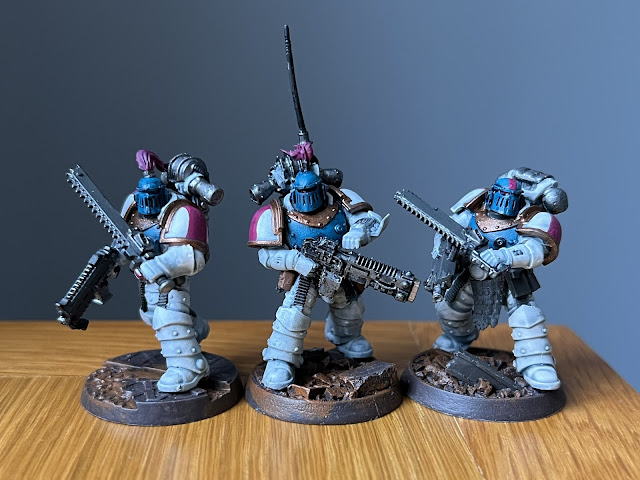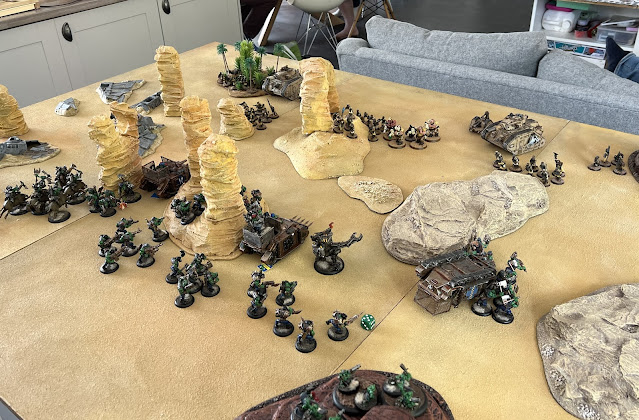+ War of the False Primarch: Painting more Silver Stars +
+ Come and see. +
+ An inload looking at some work in progress painting on my Silver Stars for the War of the False Primarch, ahead of their not-quite Index Astartes. +
+++
+ [REDACTED] +
Are they? Aren't they? Lost or Forgotten, disguised traitors, a sinister alien artifice – or something entirely more esoteric?
The meat of the narrative in +Some Things Are Best Left Forgotten+ is, I feel, is in the five 'canon' Pentarchy Chapters, and the eleven(ish) Chapters of the Partisans, but the Silver Stars offer key background that gives the others something to shine against.
They were always intended to (and will) remain fairly anonymous and underexplored, but I thought it'd be underserving the people who have painted up some examples to not have any info, so rather than an 'Index Astartes' article, they'll instead have an 'Index Apocrypha', a bit like the Rogue Trader era-inspired Spacewolves Chapter [+noosphericinloadlinkembedded+], with the details left deliberately unresolved.
In short, you're going to get a look at the various theories surrounding them (and goodness there have been a lot!), including lots inspired by ideas that followers of the project have asked.
+++
To that end, then, I've been polishing things up. A further ten Silver Stars are nearing completion, along with the chap at the top of the inload, who is an as-yet-undiscovered character, bearing a Heat-Death Nihilation Mace and a sword, which may or may not be rainbow-hued.
The process I've been following is from my original recipe for the Pseudolegion, which you can inload here [+noosphericinloadlinkembedded+]; and they're getting to the stage that I'll need to add the markings, which you can dig through here: [+noosphericinloadlinkembedded+]
First up, three regular ol' Tactical Marines/Legionaries. As usual when building models, I aim for a couple of more interesting poses for every half-dozen 'normal' ones. That sort of proportion means that the army as a whole looks suitably military and determined, but there's interesting stuff to look at if you want to.
Here, two carrying boltguns help to frame and set off one throwing grenades. All are in the curiously anonymous Mark II 'Crusade' power armour (or at least a very good replica).
Plumes are seemingly de rigeur this millennium for the Silver Stars; they add a little flourish, but don't seem to have particular relevance to the individual's status.
A volkite caliver-bearing Veteran here is flanked by two Pseudolegionaries with chainswords.












